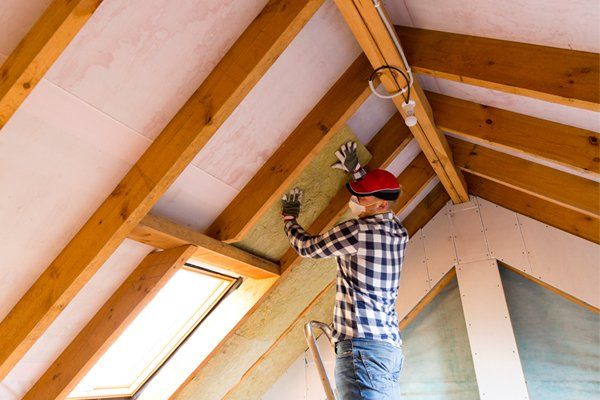Expert In Attics Insulation
For the climate zones of the areas Eagle Insulation
operates in, attics
should have at least an R-30 insulation.
When you look up in your attic you should see 8" – 13" of insulation on the floor of the attic depending on the type of material that is installed. This is a R-30. Anything less and you would benefit from having additional insulation installed.
Insulating your attic will save you money on heating bills in winter. Heat rises, therefore by insulating your ceiling you will retain the heat you pay to generate into your home.
In summer your attic becomes very hot, by insulating your ceiling you create a barrier between your living space and the hot attic area. If you have air conditioning the unit will not have to run as often, thus saving you money.
The Attic Insulation Process using cellulose:
Eagle Insulation starts by laying tarps under the crawl hole into the attic and setting up a ladder. Then we proceed to install all necessary "Barriers" around recessed lights, exhaust pipes of hot water heaters and heating units, heater closets and bathroom vent fans.
This is very important.
While the cellulose insulation
itself is fire retardant you do not want the insulation to entrap the heat generated by these objects as it could cause an electrical short or combustion of some flammable wood area of the house itself.
The placement of a barrier around heat generating object prevents future workmen in the attic from accidentally kicking material onto the heat source.
If the home has a heater closet this also needs a barrier to ensure the vents do not become blocked. This will cause a back-up of dangerous gases into the home.
A hose is run from the truck up to the furthest point in the attic. Working our way back to the crawl hole, the desired R-Value of cellulose is blown in.
We take great care not to block the "eave vents" as these are important for proper ventilation of the attic. A piece of fiberglass insulation is stapled to the crawl hole cover. This completes the blanket of insulation protecting the living space of your home.
We then encourage you to inspect our work before we replace the crawl hole cover.
Thoroughly vacuuming the areas we've worked in completes the job.
The Attic Insulation Process using fiberglass batts:
This is only recommended if you plan on doing future work in the attic as batts hold up better to people crawling over them.
Fiberglass batts are laid out as tightly together as possible covering the entire attic, except heat sources. While not creating a seamless blanket of insulation, as with blown in cellulose, it is the next best way to insulate an attic.

